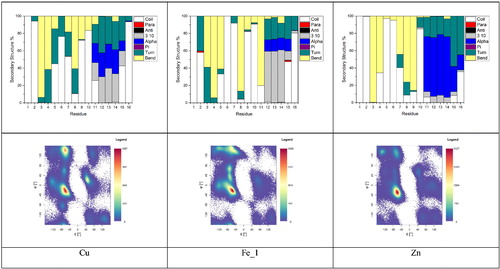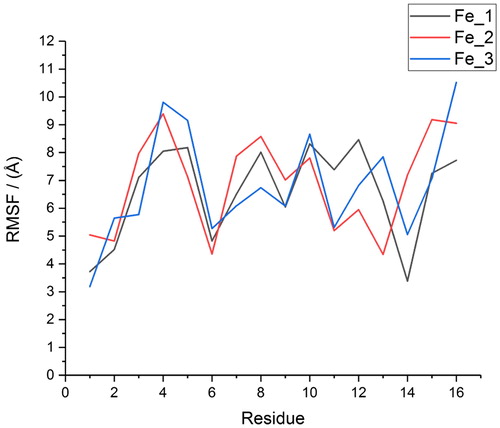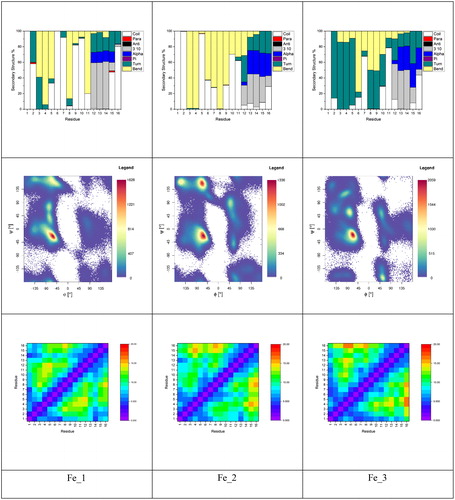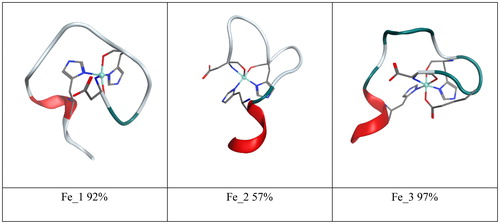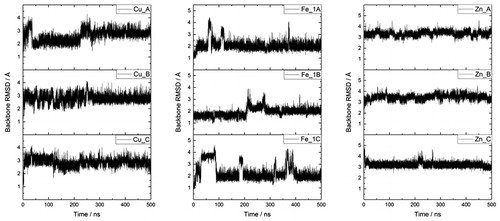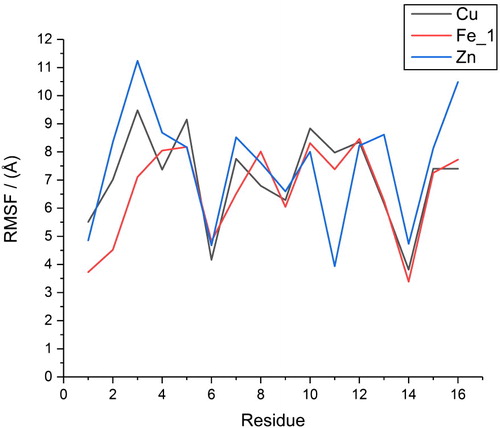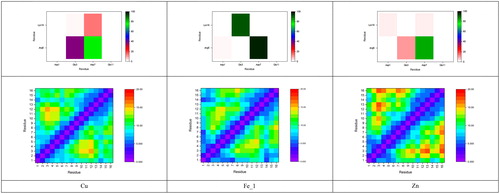Figures & data
Figure 1. Metal binding modes used in this study. Top row, left-right: Fe_1, Fe_2 and Fe_3. Bottom row, left-right: Cu and Zn.
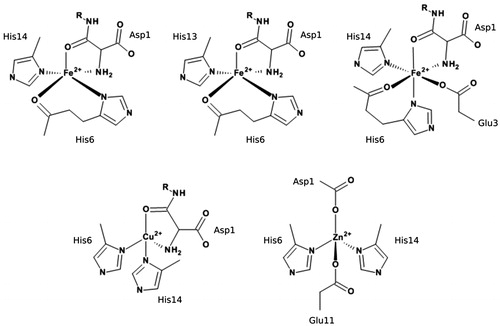
Table 1. Total percentage of secondary structure, by type, for Fe(II)–Aβ complexes.
Table 2. Percentage of secondary structure types observed over equilibrated trajectories.
Table 3. Statistics of hydrogen bond occupation.
Table 4. Summary of bond critical point propertiesTable Footnotea for metal–ligand bonds (au).
Figure 8. Breakdown of secondary structure and Ramachandran maps for Cu, Fe_1 and Zn complexes with Aβ1–16.
